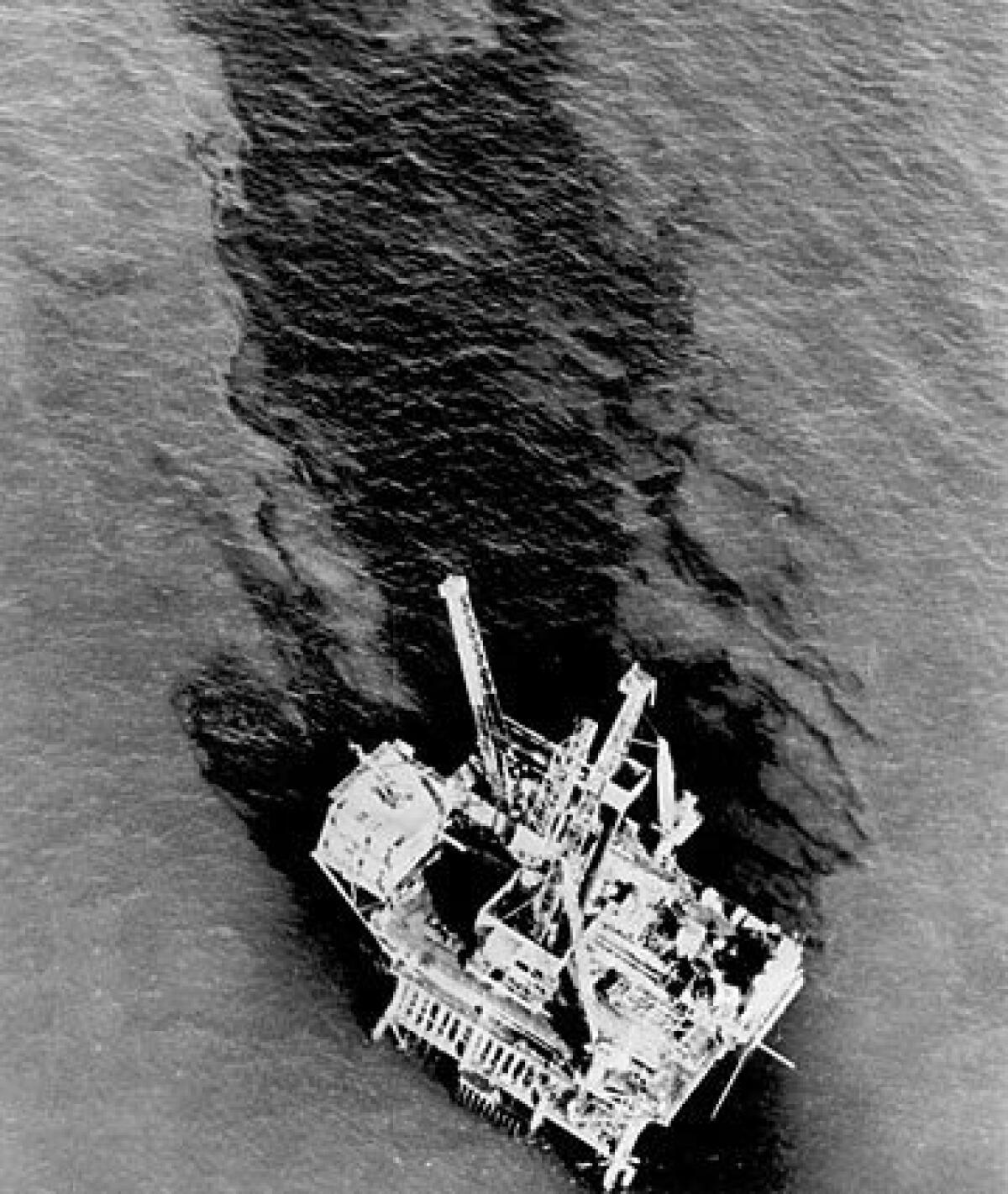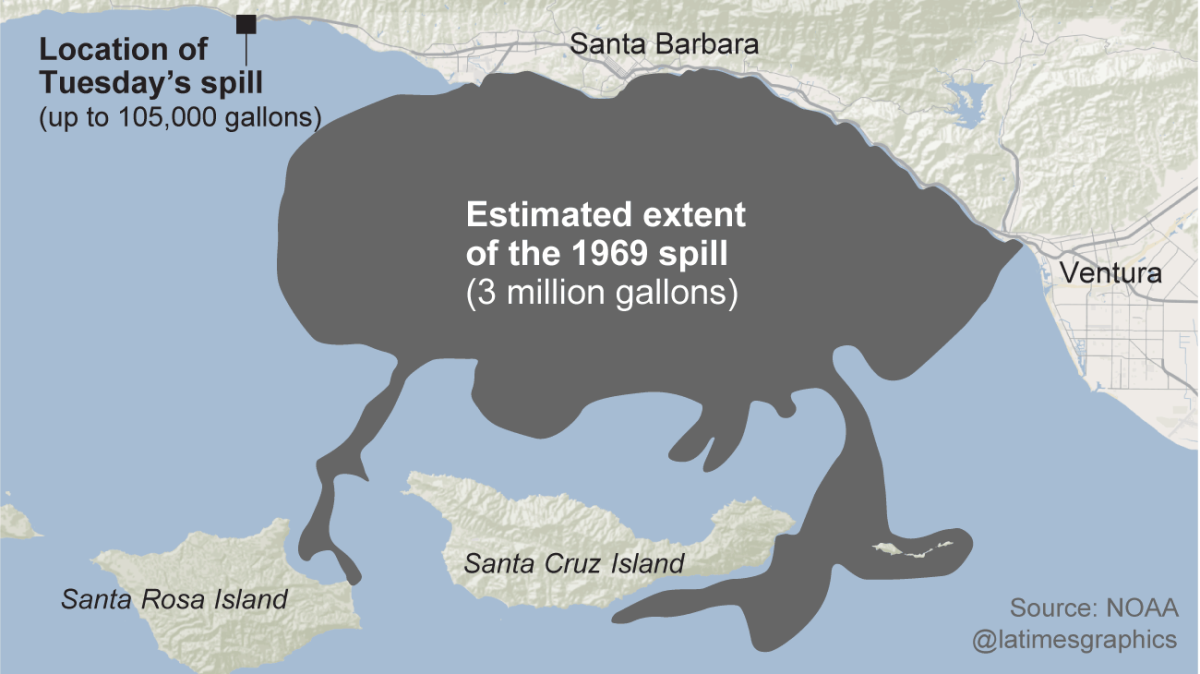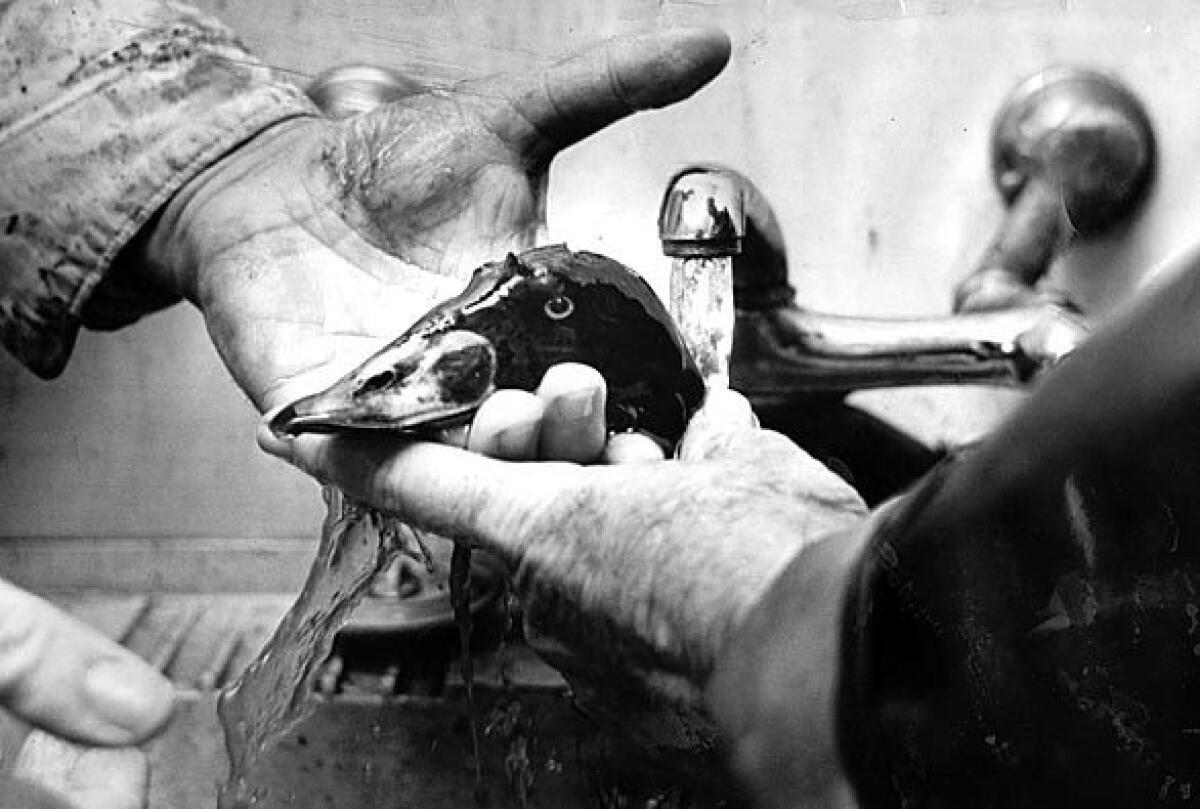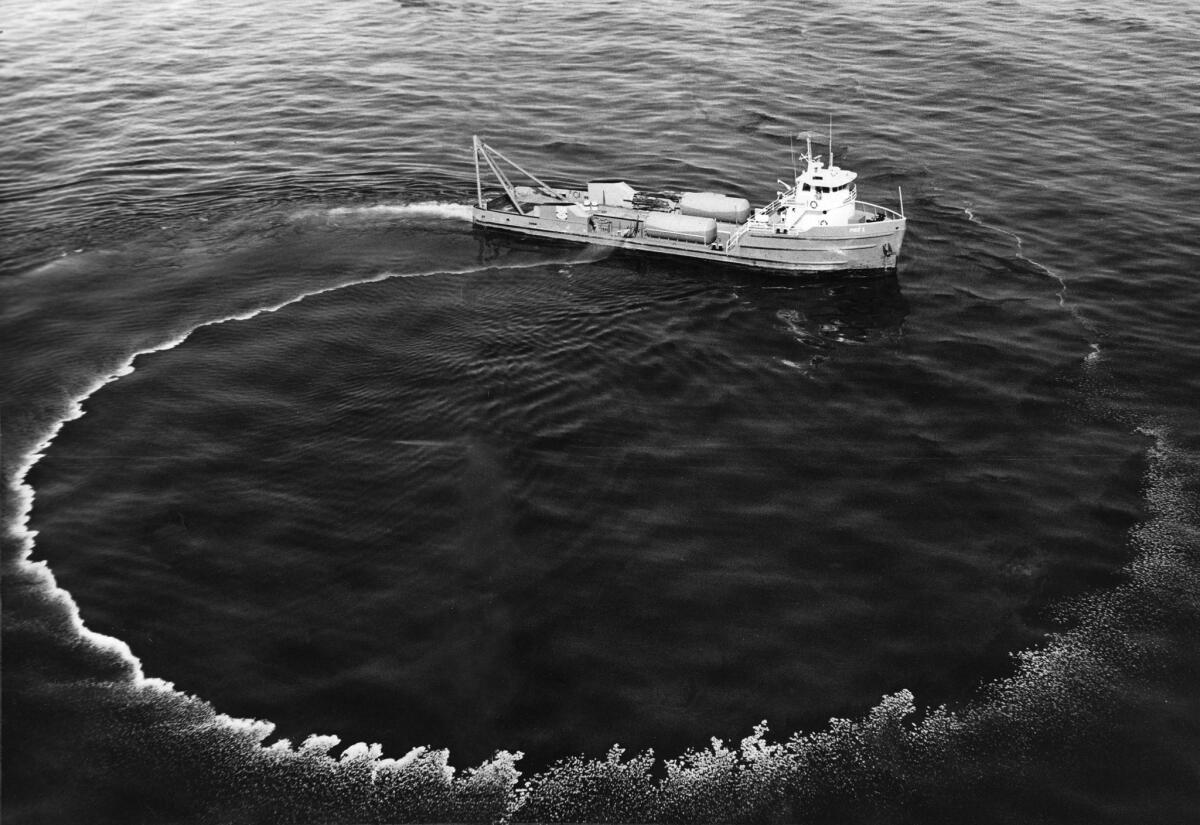The environmental disaster that changed California — and started the movement against offshore oil drilling
- Share via
The prospect of allowing new oil drilling off the coast of California is placing President Trump on yet another collision course with the state.
California has been a leader in restricting offshore oil drilling since the 1969 Santa Barbara oil spill. It was the worst oil spill in the nation’s history – until 20 years later, when the Exxon Valdez dumped 11 million gallons of crude off the coast of Alaska.
The spill was a seminal moment in both California and American environmental history.
Here’s a retrospective of that moment from the archives of The Times:

SHATTERING THE SEA FLOOR
How the spill happened
Union Oil Co.'s Platform A, boring nearly a mile beneath the waves, punctured a high-pressure pocket of petroleum. Oil exploded from the breach so violently that it shattered the sea floor and gushed uncontrollably into the blue Pacific, congealing into a chocolate mousse mat a foot thick. Winds carried part of the oil southwest to San Miguel Island, and the rest was tugged by currents toward Santa Barbara.
"The thing I remember most about it was the noise of the waves breaking on the beach ended," said Robert Sollen, author of "An Ocean of Oil," a book about offshore drilling. "The water was heavy and lubricated with oil. There was total silence."
Captured live on TV, the images of dying animals and frantic cleanup crews changed the consciousness of the nation. The spill "was the most important event that led to the environmental revolution of the 1970s," U.S. Interior Secretary Bruce Babbitt told The Times in 1999. "That was the event that galvanized public awareness of the environment and support for a decade of profound change."

DEVASTATING THE COAST
Images stunned the world
Oil spewed into the water at the rate of 1,000 gallons per hour for a month before workers could begin to slow it down.
Before it was over, an oil slick coated the coastal waters and stretched 35 miles from Rincon Point, on the Santa Barbara-Ventura County line, to Goleta. The oil was so thick and heavy at some beaches that breaking waves were silent.
Night after night, viewers were sickened by images of oil-drenched birds that couldn't fly, sea otters that couldn't swim, and tides that brought in the corpses of dead seals and dolphins.
The spill even prompted a presidential visit to Santa Barbara, which suffered widespread damage to its sea grass and underwater flora. When newly sworn President Nixon saw the tarnished coastline, he remarked that the "incident has frankly touched the conscience of the American people."
The cleanup was painstaking and slow. Oil was soaked up by using straw and cat litter.
It took years for Santa Barbara's ecosystem to recover.


HOW THE OIL SPILL CHANGED THE COAST
Beginning of a movement
After the 1969 spill, the California State Lands Commission placed a moratorium on all new offshore drilling in state waters, even on existing leases. A federal moratorium has effectively banned new offshore drilling in the federal waters off California for decades. Today, there are 23 offshore oil and gas leases in state waters, according to the commission.
New federal policies established after the disaster required offshore oil platform operators to pay unlimited amounts toward oil spill cleanup costs, along with penalties of up to $35 million.
In the aftermath of the spill, Nixon signed the National Environmental Policy Act in 1969, which requires environmental impact reports, and the California Environmental Quality Act was adopted the next year, says Peter Alagona, an associate professor of environmental studies at UC Santa Barbara.
The nation’s first Earth Day, spearheaded by burgeoning grassroots environmental groups, was celebrated in 1970.
Laws regulating air and water pollution soon followed, as did legislation protecting sensitive coastal areas and endangered species.
UPDATES:
1:15 pm This story was updated to remove a quote from a Union Oil official published during original coverage of the spill that turned out to be erroneous.
Sign up for Essential California
The most important California stories and recommendations in your inbox every morning.
You may occasionally receive promotional content from the Los Angeles Times.








